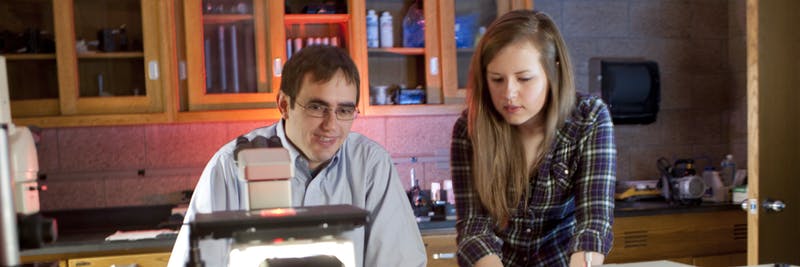Document Type
Conference Proceeding
Abstract
We are creating a suite of tools and techniques based on optics to be used for teaching a variety of engineering topics. Each tool is intended for non-expert use and without the need for high-end equipment such as vibration-free optical tables. Here we report progress on three such tools: image-plane digital holography for measuring mechanical deformation; schlieren imaging of convective flows using a smart phone; and a simple optical communication protocol using LabVIEW. We will present the designs of the tools and preliminary results from teaching engineering labs and projects with these tools. Specific courses impacted to date include Fluid Dynamics, Mechanical Systems and Measurements, and Physical Optics.
We use digital holography for rapid and precise imaging of mechanical deformation. Digital holography uses a laser and beamsplitter to create an interference pattern and image it with a digital camera. One of the beams reflects off a metal bar that we can mechanically load and deform. The small deformation creates a phase shift to the interference pattern, which can be readily and precisely analyzed after numerically reconstructing the hologram, typically performed in Matlab. Sub-micron precision is observed, in accordance with the wavelength of visible light.
Schlieren imaging is a powerful technique for fluid visualization. In our setup, a single curved mirror is used to image a point source onto a screen or detector. The light source is the flash of a smart phone camera, and the detector is the smart phone camera. Near the curved mirror, a convection source such as a lit candle is placed. A stop is used to block a portion of the field, enabling the refraction caused by the flow’s density variations to create an image of the flow. We will report the design of a compact and portable setup to hold and position the mirror and phone. The parts are 3-D printable or otherwise commercially available.
Laser communication uses either amplitude, frequency, or phase steps of the laser field to encode information. Here we focus on amplitude- and frequency-shift communications, using simple diode lasers along with a standard computer data acquisition card. We demonstrate high fidelity communications at several hundred kbps speeds, including the ability to post messages to social media sites via the laser protocol.
This work is supported by the NSF Division of Undergraduate Education
Department(s)
Physics and Engineering
Publication Title
ASEE Annual Conference and Exposition, Conference Proceedings
Publication Date
8-23-2022
E-ISSN
21535965
Recommended Citation
Lemke, Nathan D.; McCauley, John; Noble, Tristan E.; Riermann, Grace; St. George, Ellesa; Lindquist, Nathan C.; Stein, Keith R.; and Rogers, Karen Irene, "Developing optical devices and projects for teaching engineering" (2022). Physics and Engineering Faculty Publications. 126.
https://spark.bethel.edu/physics-faculty/126
Included in
Atomic, Molecular and Optical Physics Commons, Electrical and Computer Engineering Commons, Engineering Education Commons



Comments
Originally published in Lemke, N., & Rogers, K., & Lindquist, N., & Stein, K., & Riermann, G., & St. George, E., & Noble, T., & McCauley, J. (2022, August), Developing optical devices and projects for teaching engineering Paper presented at 2022 ASEE Annual Conference & Exposition, Minneapolis, MN. https://peer.asee.org/42008
Student authors: Grace Riermann, Ellesa St. George, Tristan Noble, John McCauley, Physics and Engineering